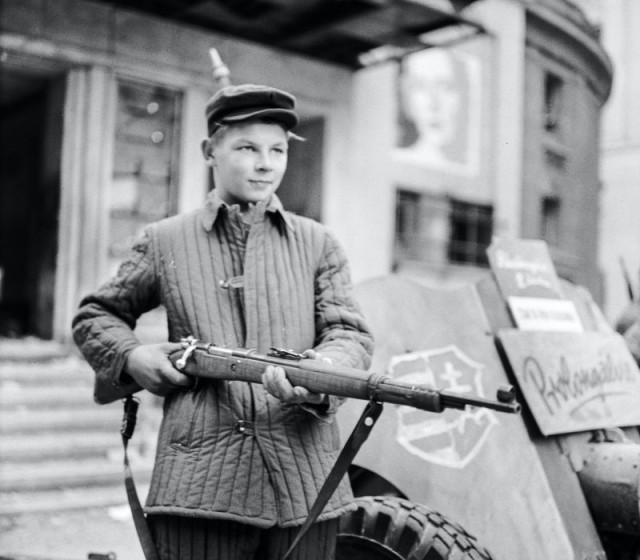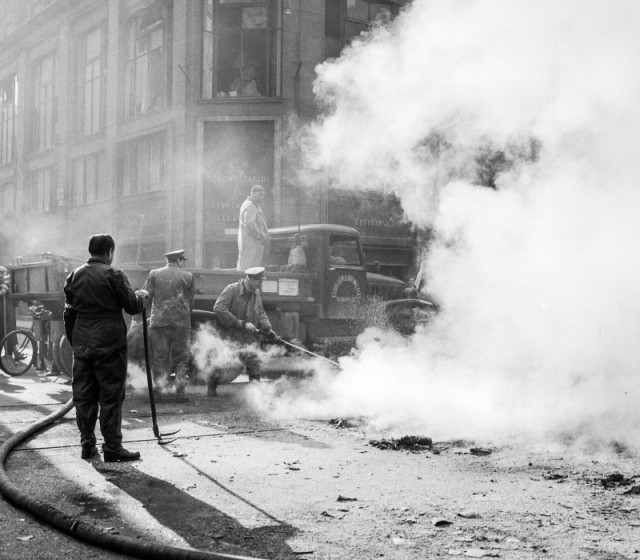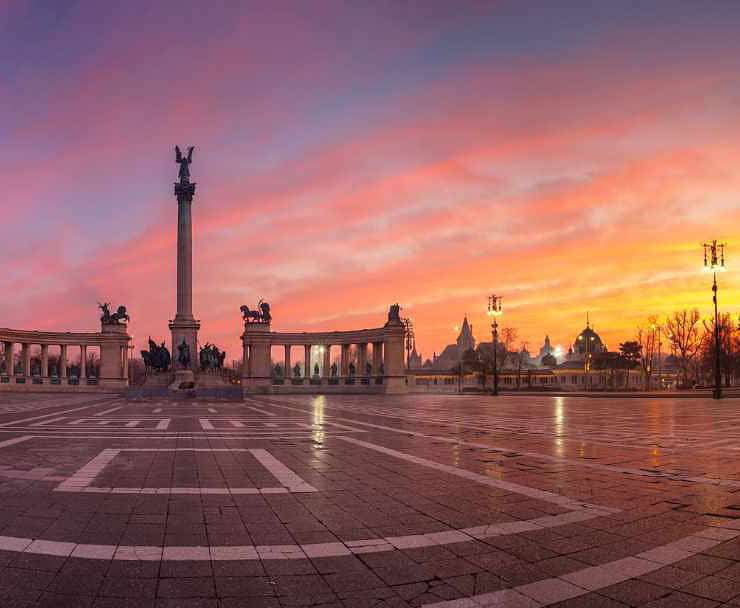23rd October is variously known as Memorial Day or Freedom Day in Hungary (A Szabadság Napja in Hungarian). It is on this day that Hungarians commemorate the crushed uprising against the Soviet Union. On 23rd October 1956, an uprising against the Soviet occupation and communist repression began with a demonstration by university students in Budapest.
When a delegation of students was detained after entering the state radio building to try to broadcast their demands, the protesters outside demanded their release. The protesters were then fired upon by the ÁVH (state security police). This act led to violence and disruption across the city and ultimately led to the collapse of the government.
After Imre Nagy formed a new government with the declared intention of re-establishing free elections and to withdraw from the Warsaw Pact, the Politburo initially appeared open to negotiating the withdrawal of Soviet troops. Somewhere however there was a change of mood and on 4th November a large Soviet force entered Budapest and other cities around the country. Hungarians resisted for a week but they could not overcome the vastly superior firepower of the Soviet troops. Over 2,500 Hungarians and 700 Soviet soldiers were killed during the uprising and 200,000 fled as refugees.
The symbol
A great symbol of the Hungarian revolution is the Hungarian flag with the circular hole in the centre. This derives from someone in the crowd on 23rd October cutting out the Communist coat of arms from the Hungarian flag and thus symbolically purifying it.
The leaders of the uprising, including Imre Nagy and military commander Pál Maléter were executed in June 1958, after secret trials were held.

There are a few memorials to the 1956 uprising in Budapest. One is the bronze bullet hole markers in the wall of the Ministry of Agriculture Building on Kossuth Lajos Square. These markers, embedded bronze balls, show where the wall was once riddled with bullet holes, made when the Soviet and state security forces fired on the crowd. This atrocity took place on 25th October 1956, a day known to Hungarians as Bloody Thursday.
The truly iconic memorial features Imre Nagy standing on a bridge. It was controversially relocated in 2019 from it’s original site, on Vértanúk (Martyr’s) Square, with Nagy facing parliament, to its current location on Jászai Mari Square.
Limited Commemoration in 2020
In view of the epidemiological situation, this year’s government programs for Freedom Day are limited to the ceremonial flag-raising, which will be held in Kossuth Square on the morning of 23rd October at 9 a.m., and the handover of the Hungarian Order of Honour.
Between 22nd October and 4th November, there is a “Memorial Images 1956 – City Exhibition” located at iconic locations around Budapest.









